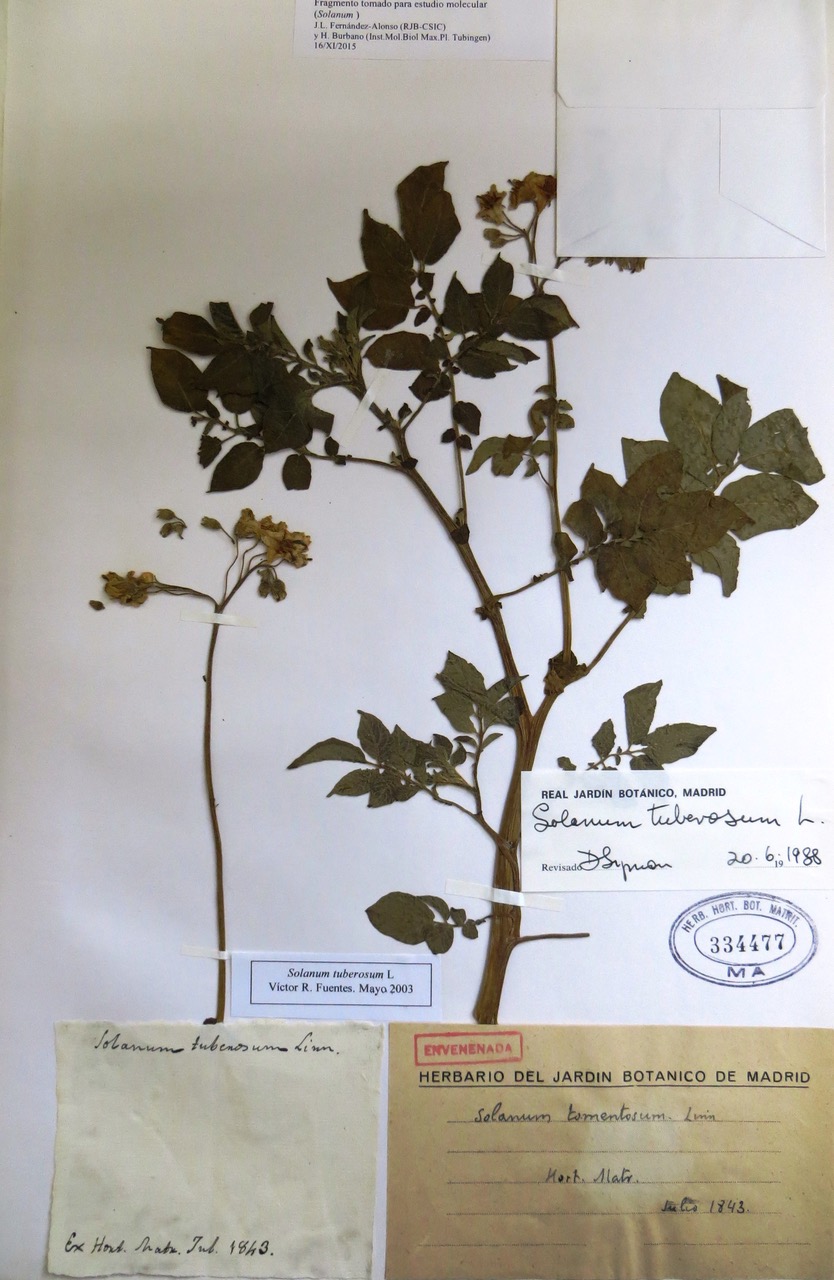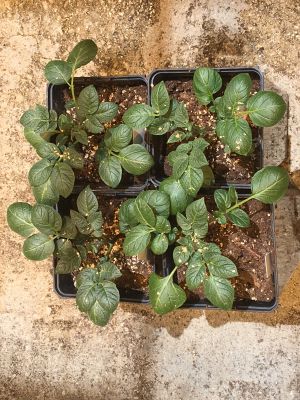Las primeras patatas o papas (Solanum tuberosum L.) que se introdujeron en Europa y que ahora se cultivan en todo el mundo, estaban estrechamente relacionadas con las variedades andinas ecuatoriales, que posteriormente se cruzaron específicamente con las variedades chilenas de tierras bajas. Considerado un alimento global con gran importancia en la dieta no solo europea, sino también a nivel mundial, su expansión se ha debido en gran medida a su capacidad de adaptación al cultivo en regiones con diferentes condiciones de latitud y temperatura.
La formación de tubérculos es un proceso muy regulado, y mientras que las variedades peruanas son capaces de formarlos a lo largo de todo el año, las variedades europeas se han adaptado a producirlos solo en una determinada época del año cuando las condiciones de luz y temperatura son óptimas antes de que las temperaturas bajen (y el tubérculo se congele en el suelo).
Cómo y cuándo se ha producido esta adaptación son las preguntas a las que da respuesta un estudio internacional publicado en la revista Nature Ecology & Evolution, liderado por Hernán Burbano, del Max Planck Institute for Developmental Biology de Alemania, y en el que participan también los investigadores del CSIC José Luis Fernández Alonso, del Real Jardín Botánico, y Salomé Prat, del Centro Nacional de Biotecnología.
El trabajo ha analizado la evolución y adaptación de las variedades de patata europeas comparando los genes implicados en la formación de tubérculos de muestras europeas y sudamericanas actuales. “El estudio de los últimos 350 años de evolución de la patata en Europa ha permitido caracterizar la diversidad genética de las patatas históricas utilizando marcadores de genoma completo. La investigación también destaca el poder de combinar genomas contemporáneos e históricos (de los herbarios) para comprender la compleja historia evolutiva de la adaptación de los cultivos de patata a los nuevos climas donde fue introducida en cultivo”, señala el investigador José Luis Fernández Alonso, que ha colaborado con Hernán Burbano en esta investigación.

Investigaciones genéticas en colecciones históricas y contemporáneras para conocer la evolución de las variedades
Hasta ahora, el origen de la patata se había documentado únicamente utilizando aproximaciones históricas. Sin embargo, en este estudio se incorporan investigaciones genéticas que ayudan a conocer la complejidad evolutiva de las variedades en cultivo, una información muy relevante para el desarrollo comercial de nuevas variedades con mejora genética basada en el conocimiento de las adaptaciones positivas en el crecimiento de la planta.
El estudio ha analizado si una mutación natural en el gen CDF1, que permite la formación de tubérculos en regiones donde los días en verano son más largos que en regiones cercanas al Ecuador, ocurrió en Europa o proviene de las variedades importadas de Chile en la segunda mitad del siglo XIX” explica la investigadora del CNB Salomé Prat. “El trabajo indica que esta mutación se originó de forma independiente en Europa, aunque coincide en el tiempo con la re-introducción de variedades chilenas y cruce con plantas silvestres, para la selección de genes de resistencia a Phythophtora que alrededor de 1840 causó la plaga de la patata en Europa, y a virus. Es probable que la adopción de patata como alimento básico en Europa propiciara la identificación de esta mutación que debido a su carácter dominante (patata es una especie tetraploide) se incluye en la mayoría de especies que se cultivan en la actualidad”.
Durante varios años, el equipo investigador ha secuenciado los genomas de las patatas históricas sudamericanas y europeas de los años 1660–1896, con la ayuda de las colecciones conservadas en los herbarios. Algunos especímenes analizados fueron recolectados en las expediciones españolas de los siglos XVIII y XIX en América y también por Darwin en el viaje del Beagle. Se han secuenciado un total de 88 muestras que incluyen 29 especímenes de herbarios históricos (3 muestras chilenas y 26 muestras europeas, algunas cultivadas en jardines botánicos). También se han secuenciado 43 patatas que constituyen una muestra de la diversidad de las razas andinas contemporáneas, así como 16 cultivares europeos modernos.
Los autores concluyen que el cruzamiento de múltiples variedades de patatas sudamericanas en Europa, junto con el cruce posterior con especies silvestres ha contribuido a la actual variedad de patatas europeas.
'The origins and adaptation of European potatoes reconstructed from historical genomes' has been scheduled for Advance Online Publication (AOP) on Nature Ecology & Evolution's. June 2019.
Rafal M. Gutaker1, Clemens L. Weiß1, David Ellis2, Noelle L. Anglin2, Sandra Knapp3, José Luis Fernández-Alonso4, Salomé Prat5 and Hernán A. Burbano1*
1Research Group for Ancient Genomics and Evolution, Department of Molecular Biology, Max Planck Institute for Developmental Biology, Tuebingen, Germany
2International Potato Center, Lima, Peru3Department of Life Sciences, Natural History Museum, London, UK
4Departamento de Biodiversidad y Conservación, Real Jardín Botánico RJB-CSIC, Madrid, Spain
5Departamento de Genética Molecular de Plantas, Centro Nacional de Biotecnología-CSIC, Madrid, Spain
DOI 10.1038 / s41559-019-0921-3.






